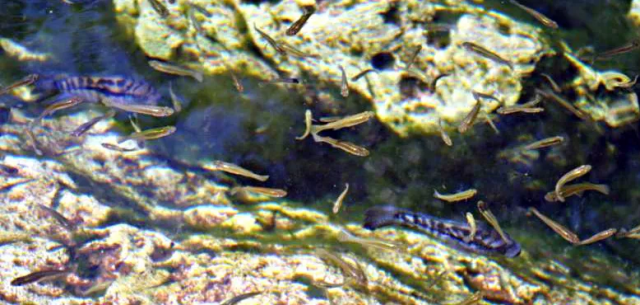When I snorkel different Cenotes in Mexico, there were slight color differences in one JD to another one cenote to another.
The Cenotes tend to isolate populations, and because one cenote may have lighter color rocks, or more or less vegetation, a certain population may select for certain colors due to terrain. It is the same for Matayheros uropthalmus, but a slight color difference may not call for populations to be different species. If terrain is light the lighter colored fry will survive
In one centote, a JD may be quite blue.

In another a couple clocks away, an individual may be more brown, or both colors may be mixed in the same area.
I remember when Don Conkel discovered a very red version, in a single isolated Cenote.
In one Cenote, the M. uropthalmus may be very light in basic color.
.
027 zps4b102ffd
In another where jungle provides more constant shade, uropthalmus may present darker.
Azul imovie edit
This not only goes in Cenotes.

Above, Chuco intermedia from one tributary.
Below another Chuco intermedia from a different tributary

Beyond color, topography may even select for a slightly different shapes, of the same species







